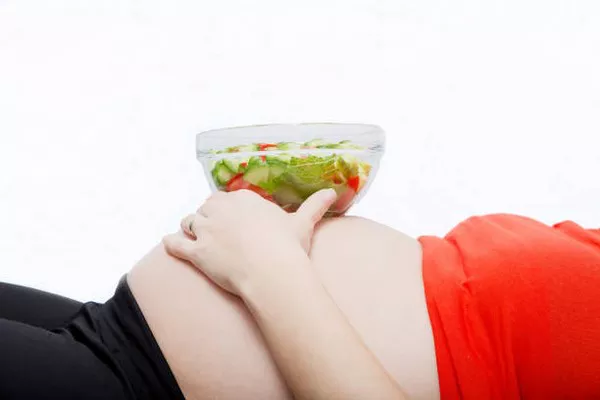Losing postpartum belly fat can be a challenging journey for many new mothers. It requires patience, consistency, and a well-rounded approach that combines diet, exercise, and lifestyle changes. This comprehensive guide will provide you with the best strategies to help you achieve your goal.
Understanding Postpartum Belly Fat
Postpartum belly fat is a common concern among new mothers. It is the result of the body’s natural changes during pregnancy, including weight gain and the stretching of the abdominal muscles. Understanding the nature of this fat is the first step in addressing it effectively.
1. Healthy Diet
Focus on Nutrient-Dense Foods
A healthy diet is crucial for losing postpartum belly fat. Concentrate on eating nutrient-dense foods that provide essential vitamins and minerals.
Fruits and Vegetables: These are low in calories and high in nutrients.
Lean Proteins: Chicken, fish, and legumes help in muscle repair and growth.
Whole Grains: Brown rice, quinoa, and oats provide sustained energy.
Avoid Processed Foods
Cut down on processed foods that are high in sugar and unhealthy fats. These include:
Fast Food: Burgers, fries, and other fast food items.
Sugary Snacks: Cookies, cakes, and candies.
Refined Grains: White bread, pasta, and pastries.
Stay Hydrated
Drinking plenty of water is essential for weight loss. It helps in digestion and keeps you feeling full, reducing the chances of overeating.
2. Regular Exercise
Cardiovascular Workouts
Cardiovascular exercises are effective in burning calories and reducing belly fat. Some great options include:
Walking: A simple and effective way to get started.
Running: Increases heart rate and burns more calories.
Cycling: A fun and low-impact exercise.
Strength Training
Strength training helps in building muscle, which in turn burns more calories even at rest. Incorporate exercises like:
Squats: Strengthen the lower body.
Lunges: Target the thighs and buttocks.
Push-Ups: Work the upper body and core.
Core Exercises
Focusing on core exercises can help tone the abdominal muscles. Some effective exercises include:
Planks: Strengthen the core muscles.
Crunches: Target the upper and lower abs.
Leg Raises: Work the lower abdominal muscles.
3. Breastfeeding
Breastfeeding not only provides essential nutrients to your baby but also helps in burning extra calories. It can help in losing postpartum belly fat faster.
Benefits of Breastfeeding
Calorie Burn: Breastfeeding can burn up to 500 calories a day.
Hormonal Balance: Helps in balancing hormones that aid in weight loss.
Uterine Contraction: Stimulates uterine contractions, helping the uterus return to its pre-pregnancy size.
4. Adequate Sleep
Getting enough sleep is crucial for weight loss and overall health. Lack of sleep can lead to weight gain and increased belly fat.
Tips for Better Sleep
Establish a Routine: Go to bed and wake up at the same time every day.
Create a Comfortable Environment: Ensure your bedroom is dark, quiet, and cool.
Limit Screen Time: Avoid screens at least an hour before bedtime.
5. Stress Management
High levels of stress can lead to weight gain, especially around the belly area. Managing stress is essential for losing postpartum belly fat.
Stress Reduction Techniques
Meditation: Helps in calming the mind and reducing stress.
Yoga: Combines physical activity with relaxation techniques.
Deep Breathing: Simple exercises to reduce stress and anxiety.
See Also: When To Start Postpartum Exercise To Reduce Tummy
6. Postpartum Support Garments
Wearing postpartum support garments can help in providing support to your abdominal muscles and improving posture.
Types of Support Garments
Belly Bands: Wrap around the abdomen to provide support.
Postpartum Girdles: Offer more structured support.
Compression Leggings: Help in reducing swelling and providing support to the lower body.
7. Consistency and Patience
Losing postpartum belly fat takes time and consistency. It is essential to stay committed to your goals and be patient with the process.
Setting Realistic Goals
Short-Term Goals: Focus on small, achievable goals like losing 1-2 pounds per week.
Long-Term Goals: Aim for sustainable weight loss and overall health improvement.
8. Professional Guidance
Seeking professional guidance can provide you with personalized strategies and support.
When to Seek Help
Dietitian: For personalized meal plans and nutritional advice.
Personal Trainer: For customized exercise routines.
Healthcare Provider: For overall health and wellness support.
Conclusion
Losing postpartum belly fat requires a multifaceted approach that includes a healthy diet, regular exercise, adequate sleep, stress management, and professional guidance. By incorporating these strategies into your daily routine, you can achieve your weight loss goals and improve your overall health. Remember to be patient and consistent, as the journey to losing postpartum belly fat is gradual but achievable.


